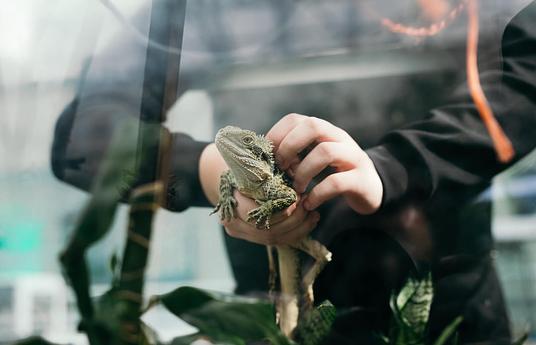When you see a picture of people sat in rows with their hands held up in the air, you instantly know what the photo is of – a classroom. It is a traditional image that we all recognise no matter which generation we are a part of.
When you consider that if different generations were asked to think of a phone or a computer they would picture different images, you start to realise just how little the classroom has changed whilst everything else has shifted with each decade.
We recently held a twitter poll to ask our followers what they thought would be the best learning environment, and interestingly, if not surprisingly, no one voted for the traditional classroom. Which raises the question - why do we still force children to sit in rows facing the whiteboard, when few of us believe this actually stimulates learning?
Part of this could be due to our belief that learning should be serious work, when actually we are all learning all the time, as Anneli Rautiainen summarises in her interview with us, ‘We must stop feeding on the idea that learning only happens in classrooms.’
So what do alternative classroom settings look like?
As the world charges forward into a technologically heavy future, many people are searching for a way for children and education to be submerged into the physical and natural world.
Metin Ferhatoglu, Director of Technology at Roberts College, Turkey, works in a school built in the middle of a forest, which presents all kinds of outdoor learning opportunities that he would like to utilise, ‘they can use a green screen and shoot movies there. In geography classes we can take our students outside. I can imagine in an English class a student reading a poem in the fresh air. My dream is to have the classes, if the weather permits, outside.’
The Plant Academy and Learning From Animals
One of our 100 Finnish experiments is the Plant Academy initiative, which is a great example of outside learning being put into practice. Their model has students learn how to take care of plants, compost and recycle, they then sell and market their produce. The goal of the project is to make an easily replicable model that can be adopted by other schools, that teaches children about environmental issues as well as entrepreneurial business skills.
Learning From Animals is another similar initiative in which school children actively look after greenhouse plants and animals every week. In doing so the innovation organisers hope to find that interacting with animals and collaborating together with other students will make children active learners, and give them a sense of responsibility whilst improving their wellbeing.
With the majority of British children spending less time outside than prison inmates (as reported in Free the Kids), could technology be having a damaging effect on their learning capabilities? Pasi Sahlberg told us about a recent study which looked at how the use of the internet can change a child’s brain.
‘The first findings in this research suggest that the use of the internet, and especially reading hyperlinks, changes the brain. The brain adapts to processing this kind of information and to a rapidly changing action – looking at one thing for ten seconds and then shifting the attention to another. Because of this change in the brain, traditional reading may ultimately become challenging. The amount of students who are having difficulties with traditional reading is on the rise. When this kind of person is given a book, they will read it for five or ten minutes after which they perceive it as boring.’
Janni Nicol, who is an advisor for the Steiner Waldorf education, thinks that technology should be introduced at a later stage, with the physical world being the best environment to establish creative skills. ‘Children have lots of time to work with technology at a later stage and to use it creatively,’ she stated in her HundrED interview, ‘if they use it too young it kind of takes them over, they're absorbed by it rather than able to use it. They need to learn to be creative first and use their imagination and fantasy rather than be used by I.T.’
It is easy to idealise what we think children should be doing and where they should be learning. The immediate image that comes to mind is children playing outside, without technology, discovering the natural world. This of course is a wonderful picture, but perhaps it is something we like to envisage because it is reminiscent of our own childhoods.
How Tech Can Improve the Outside
The outside clearly has many benefits, from promoting wellbeing to helping children be active to stave off the rise of childhood obesity. But how do we employ this in our increasingly mega-city world, where concrete rules and nature is squeezed into tight, controlled spaces? In a world where technology is on the rise?
Many were quick to scoff at the fast impact of Pokemon Go, but realistically it enabled and excited children (and adults) to be outside and explore where they lived. According to a recent Huffington post article, this is a prime example for educators of how to excite children about the outdoors. When we spoke to Bryan Alexander, who researches how technology can transform education, he discussed how the physical world and the digital are no longer separate, but are actually becoming more and more intertwined.
‘A casual glance in a makerspace shows people working energetically with analogue physical tools - with yarn, with plastic, with wood. But you also see them casually relying on laptops, smartphones, YouTube videos for instruction and they film themselves and share it with everybody else. So these really intertwine. Especially for younger generations the separation is less and less important.’
Museums and Gaming Rooms
Another of our Finnish projects takes both technology and kids out of the classroom, by creating games which make museums an interactive learning environment. The goal of Museums As Platforms for Educational Games is for children to be able to learn through play, thus being engaged and excited by learning, and to turn existing museums into active learning environments. The scheme is currently being developed for three Finnish museums with the view that, if successful, it can then easily be replicated around the world and in any environment. This would then create all kinds of learning environments outside of the traditional school setting.
We so far don’t know the lasting effects of technology on children, and it will surely be even longer until we figure out if these are negative or positive. We may never be able to decide, especially for those who witnessed the start of the technological age and are therefore used to a childhood in which technology was absent. However, we can’t stop technology from invading our lives or the rise of cities decreasing many children’s accessibility to wild open spaces; so there is a need to employ the tools to hand and use them to create a greater picture.
There is no reason for technology or nature to be kept separate. What it will take is teachers, and on a certain level policy makers, to use their creativity to bring all the tools at their disposal to create a well-rounded, exciting environment to maximise active learning opportunities.



